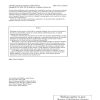Business Research Method 14th Edition by Pamela Schindler ISBN 9781264098538 1264098537
$50.00 Original price was: $50.00.$25.00Current price is: $25.00.
Authors:Pamela S. Schindler , Series:Management [835] , Author sort:Schindler, Pamela S. , Languages:Languages:eng , Published:Published:Sep 2023 , Publisher:McGraw Hill
Business Research Method 14th Edition by Pamela Schindler – Ebook PDF Instant Download/Delivery. 9781264098538 ,1264098537
Full download Business Research Method 14th Edition after payment
Product details:
ISBN 10: 1264098537
ISBN 13: 9781264098538
Author: Pamela Schindler
Business Research Method 14th Edition Table of contents:
Part I: Building the Foundation for Research
Chapter 1: Research Foundations and Fundamentals
Business Environment for Decision-Making
Role of Data in Decision-Making
Addressing the Challenges
Is New Data Needed?
The Research Process
The Language of Research
Concepts
Constructs
Operational Definitions
Variables
Hypotheses, Theories, and Models
Summary
Keyterms
Review & Discussion Questions
Cases
Chapter 2: The Research Process: An Overview
What Is Good Research?
The Research Process
Stage 1: Clarify the Research Question
Identify and Prioritize Dilemmas
Exploration
Value and Budget the Research
Stage 2: Design the Research Project
Data Collection Design
Sampling Design
Stage 3: Collect and Prepare the Data
Collect the Data
Prepare the Data
Stage 4: Analyze and Interpret the Data
Stage 5: Report Insights and Recommendations
The Research Project Time Frame
Research Process Pitfalls and Solutions
Ill-Defined Management Problems
Unresearchable Questions
Overembracing Data Analytics
The Manager’s Hidden Agenda(s)
Favored-Technique Syndrome
Researcher Inexperience
Research Process Ethical Issues and Responsibilities
Summary
Keyterms
Review & Discussion Questions
Cases
Chapter 3: Stage 1: Clarify the Research Question
Stage 1 in the Research Process
The Question Hierarchy
The Management Question
The Research Question
Investigative Questions
Measurement Questions
The Exploration Strategy
Information Sources
Evaluating External Sources
Internal Sources
Evaluating Internal Sources
Value the Research
Justify and Budget for Research
Stage 1 Ethical Issues and Their Solutions
Summary
Keyterms
Review & Discussion Questions
Cases
Additional Content
Part II: The Design of Business Research
Chapter 4: Stage 2: Research Design, An Overview
What Is Research Design?
Sampling Design
Data Collection Design
An Example
Design Dimensions
The Topical Scope
Design the Measurement Instrument
Summary
Keyterms
Review & Discussion Questions
Cases
Chapter 5: Stage 2: Sampling Design
Sampling Design
Define the Target Population and Case
Define the Population Parameters
Define the Sample Frame
A Community as Sample Frame
Define the Number of Cases
Sample versus Census
Lower Cost
Greater Speed of Data Collection
Availability of Population Cases
Better Quality Results
Accuracy
Precision
Sample Size
Define the Sampling Method
Probability Sampling
Simple Random Sampling
Complex Probability Sampling
Nonprobability Sampling
Convenience Sampling
Purposive Sampling
Snowball Sampling
Define the Selection and Recruiting Protocols
Ethical Issues and Their Solutions
Summary
Keyterms
Review & Discussion Questions
Cases
Appendix: Calculate the Sample Size
Chapter 6: Stage 2: Data Collection Design: Qualitative Research
What Is Qualitative Research?
Qualitative Research Design
Qualitative Sampling Design
Qualitative Data Collection Design
Interviews
Interviewers as Consultants
Creative Exercises
Individual Depth Interviews
Group Interviews
Focus Groups
Group Interview Drawbacks and Their Solutions
Recording, Analyzing, and Reporting Group Interviews
Combining Qualitative Methodologies
Case Study
Action Research
Merging Qualitative and Quantitative Methodologies
Ethical Issues and Their Solutions
Summary
Keyterms
Review & Discussion Questions
Cases
Chapter 7: Stage 2: Data Collection Design: Observation Research
Observation Research Design
Sampling Design
Data Collection Design
Content Type
Types of Observation
Observation Environment
Data Collection Protocol
Observer-Participant Relationship
Observer Training and Supervision
Evaluation of the Observation Method
Strengths
Limitations
Ethical Issues and Their Solutions
Summary
Keyterms
Review & Discussion Questions
Cases
Chapter 8: Stage 2: Data Collection Design: Experiments
Experiments and Causation
Causation Evidence
Causal Conclusion
Conduct an Experiment
Select Relevant Variables
Specify Treatment Levels
Control the Experimental Environment
Choose the Experimental Design
Select and Assign Participants (or Cases)
Pilot Test Data Collection Protocols, Revise
Conduct the Experiment
Validity in Experimentation
Internal Validity
External Validity
Experimental Research Designs
Preexperimental Designs
True Experimental Designs
Field Experiments: Quasi- or Semi-Experiments
An Evaluation of Experiments
Advantages
Disadvantages
Ethical Issues and Their Solutions
Summary
Keyterms
Review & Discussion Questions
Cases
Additional Content
Chapter 9: Stage 2: Data Collection Design: Survey Research
Data Collection Design: The Survey
Self-Administered Survey
Survey via Phone Interview
Survey via Personal Interview
Error in Survey Research
Interviewer Error
Participant Error
Outsourcing Survey Tasks
Evaluation of Survey Research
Ethical Issues and Their Solutions
Summary
Keyterms
Review & Discussion Questions
Cases
Part III: Measurement
Chapter 10: Stage 3: Measurement Foundations
The Nature of Measurement
Tasks of Measurement
What Is Measured
Measurement Scales
Nominal Scales
Ordinal Scales
Interval Scales
Ratio Scales
Recoding
Sources of Measurement Differences
Error Sources
The Characteristics of Good Measurement
Validity
Reliability
Practicality
Summary
Keyterms
Review & Discussion Questions
Cases
Chapter 11: Stage 3: Measurement Questions
Instrument Design
Prepare the Preliminary Analysis Plan
Confirm Communication Approach
Select Instrument Structure
Select or Craft a Measurement Scale
Research Objectives
Response Types
Number of Dimensions
Balanced or Unbalanced
Forced or Unforced Choices
Number of Scale Points
Participant Errors
The Nature of Attitudes
The Relationship between Attitudes and Behavior
Attitude Scaling
Rating Questions
Single-Response Questions
Multiple-Response Questions
Ranking Questions
Sorting Questions
Cumulative Questions
Find or Craft Measurement Questions
Question Coverage
Question Wording
Frame of Reference
Response Alternatives
Sources of Existing Questions
Pretesting
Summary
Keyterms
Review & Discussion Questions
Cases
Appendix: Sources of Measurement Questions
Chapter 12: Stage 3: Measurement Instruments
Instrument Design
Phase 2: Gather and Sort the Pieces
Question Types
Pretesting: Scope and Coverage
Responsibility Fulfillment
Phase 2: Non-Question Elements
Non-Question Elements
Overcoming Instrument Problems
Responsibility Fulfillment
Phase 3: Organize the Pieces
Order Topics and Questions
Pretest The Instrument
Physical Design
Pretesting: Physical Design
Responsibility Fulfillment
Summary
Keyterms
Review & Discussion Questions
Cases
Additional Content
Part IV: Collect, Prepare, and Examine the Data
Chapter 13: Stage 3: Collect, Prepare, and Examine Data
Collect the Data
Train the Data Collectors
Determine the Data Collection Timeline
Determine and Implement the Research Process(es)
Invite the Chosen Participants
Activate the Research Task(s)
Remind the Participants
Enter the Data
Enter the Data
Prepare the Data
Postcollection Coding of Data
Edit the Data
Complete
Accurate
Appropriately Coded
Examine the Data
Exploratory Data Analysis
Cross-Tabulation
The Importance of Percentages
Other Table-Based Analysis
Summary
Keyterms
Review & Discussion Questions
Cases
Appendix: Better Tables
Appendix: Review: Describing Data Statistically
Part V: Analyze and Interpret Data
Chapter 14: Stage 4: Hypothesis Testing
Introduction
Statistical Significance
The Logic of Hypothesis Testing
Statistical Testing Procedures
Probability Values (p Values)
Tests of Significance
Types of Tests
How to Select a Test
Selecting Tests Using the Choice Criteria
One-Sample Tests
Two-Independent-Samples Tests
Two-Related-Samples Tests
k-Independent-Samples Tests
A Priori Contrasts
Multiple Comparison Tests
Exploring the Findings with Two-Way ANOVA
Nonparametric Tests
k-Related-Samples Tests
Summary
Keyterms
Review & Discussion Questions
Cases
Chapter 15: Stage 4: Measures of Association
Introduction
Bivariate Correlation Analysis
Pearson’s Correlation Coefficient r
Scatterplots for Exploring Relationships
The Assumptions of r
Computation and Testing of r
Simple Linear Regression
The Basic Model
Concept Application
Method of Least Squares
Predictions
Testing the Goodness of Fit
Nonparametric Measures of Association
Measures for Nominal Data
Measures for Ordinal Data
Summary
Keyterms
Review & Discussion Questions
Cases
Part VI: Stage 5: Report the Research
Chapter 16: Stage 5: Research Reports: Support Insights and Recommendations
Introduction
Emphasis on Insights
Shift in Reporting Structure
Audience-Centric Planning
Audience Analysis
Audience Composition
Research Question Knowledge
Research Predispositions
Recommendation Effects
Audience Effect
Supplemental Purposes
Report Structure
Content and Style: Organize
Report Types
Report Components
Traditional Frameworks for Organization
Content and Style: Visualize
Presenting Findings
Data Visualization Specifically for the Oral Report
Content and Style: Compile
Content and Style: Practice
Content and Style: Deliver
Ethical Considerations in Reporting
Summary
Keyterms
Review & Discussion Questions
Cases
Appendix: Better Reports
Part VII: Research Project Overview
Chapter 17: An Integrated Example
The Need for Research
Receipt of an RFP at Visionary Insights
The VI Proposal for BrainSavvy Research
The Proposal Review at BrainSavvy
The BrainSavvy Finalist Interview
Visionary Insights Captures the Research Contract
Stage 1: Clarify the Research Question
The Dallas Trip
VI Project Structure and Exploration
Interviews
Data File Analysis
Process Modeling
Focus Groups
Investigative and Research Questions
Stage 2: Research Design
Sampling Design
Data Collection Design
Stage 3: Collect, Prepare and Examine Data
Activate the Survey
The Analysis Plan
Data Preparation and Examination
Stage 4: Analyze the Data
Conference Call with Parma the Following Tuesday
Stage 5: Report the Research
Oral Report
Post-Project Team Debriefing
The Continuation Contract
Three and a Half Months Later
Summary
Review & Discussion Questions
Case Index
Appendices
Appendix A: Business Research Proposals and RFPs (with Sample RFP)
Proposing Research
The Research Proposal
Proposal Structure
Executive Summary
Problem Statement
Research Objectives
Literature Review
Importance/Benefits of the Study
Research Design
Data Analysis
Nature and Form of Results
Qualifications of Researchers
Budget
Schedule
Facilities and Special Resources
Project Management
Bibliography
Appendices
Create a Request for Proposal
Proposal Administration
Summary Problem Statement
Technical Section
Management Section
Contracts and Licensing Section
Pricing Section
Format
Qualify a Researcher to Receive the RFP
Evaluate a Research Company’s Proposal
Evaluating an Unsolicited Research Proposal
Sample RFP: Covering Kids
Background
Contractual Needs
Evaluation Task
Anticipated Time Schedule
Proposal Instructions
Review Criteria
Appendix B: Focus Group Discussion Guide
Background
Appendix C: Nonparametric Significance Tests
One-Sample Test
Kolmogorov-Smirnov Test
Two-Samples Tests
Sign Test
Wilcoxon Matched-Pairs Test
Kolmogorov-Smirnov Two-Samples Test
Mann-Whitney U Test
Other Nonparametric Tests
Kruskal-Wallis Test
Appendix D: Selected Statistical Tables
References
Glossary
Indexes
Name Index
Company Index
Subject Index
People also search for Business Research Method 14th Edition:
business research methods 14th edition pdf free download
business research methods 14th edition test bank
what is business research methods
business research methods examples
You may also like…
eBook PDF
Research on Islamic Business Concepts 1st edition by Veland Ramadani 9783031186639 303118663X
eBook PDF
Contemporary Business 2012 Update 14th Edition by Louis Boone, David Kurtz 1118010302 9781118010303












